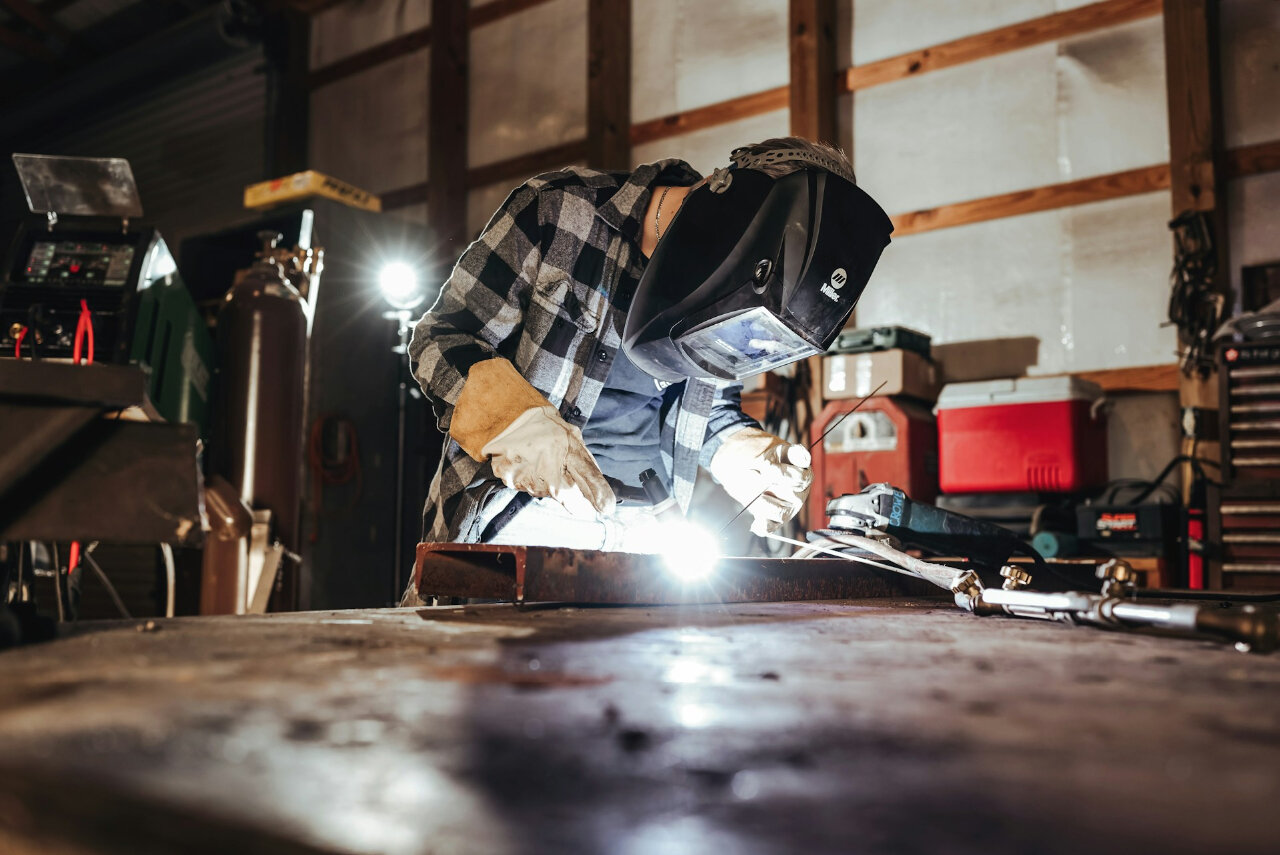February 4th, 2025, Spot Welding, Welding
In the world of manufacturing, joining techniques play a crucial role in the durability and performance of the finished product. Spot welding is a widely known method, especially effective for joining thin metals together. However, spot welding falls short when it comes to high-stress applications. In this article, we’ll explore spot welding’s limitations and compare it with other joining methods.
Spot welding joins separate pieces of metal together by applying pressure and heat to specific points or “spots”, hence its name. It uses a pair of electrodes to transmit a high electric current through the metals, which heats the metal to its melting point. Melting the metals is what then allows them to be fused together as one. When the current is stopped, the metals will solidify to form a bond.
Applications like automotive manufacturing, appliance production, and steel fabrication benefit from spot welding due to its speed and efficiency. That being said, there’s several instances where spot welding is not the optimal choice, making it insufficient for various industries and applications. Let’s explore them.
Bonds made with spot welding only join the surface of metals. This means the bond is not as strong as it would be with other welding techniques. This type of bond is sufficient for thin sheet metal, but thicker metals require a stronger bonding method for superior durability.
Furthermore, spot welding offers limited penetration compared to other joining methods. In high stress applications, the lack of deep penetration can lead to joint failure. When manufacturing components, it’s important to be mindful of the environment the final product will be in. Some components naturally experience forces that could push or pull them apart. This requires a strong bond and penetration to maintain structural integrity. In these cases, a spot weld is simply not enough.
High temperatures during the spot welding process can lead to thermal degradation. This permanently alters the structure of the metals, impacting its hardness, ductility, and tensile strength. The metal is more likely to crack or break under stress. It’s important to note that the weakening of these metals during manufacturing could lead to serious safety hazards and inconsistencies in the product’s durability.
At this time, no spot welding technique exists that is capable of creating consistent joints. Due to this, the quality and strength of spot welds can vary, even for skilled and experienced welding technicians. Electrode pressure, current strength, and the cleanliness of the metal’s surface all affect the final product when executing spot welds.
Additionally, there is the issue of contaminated welding electrodes. Contaminated or damaged welding electrodes interact with the material differently, leading to irregular welds. Electrode wear also has an impact on consistency.
When a weld is weak or irregular, it is prone to failure under stresses from daily use. In industries like aerospace or construction, safety is paramount. Even the most minor inconsistencies in a weld can cause a catastrophic failure, which is why many seek more dependable joining techniques.
Repeated stress to a component (cyclic loading) is a vital factor in manufacturing. Manufacturing components for a crane or even an office chair comes with the added consideration of its daily use, or rather what stresses it will experience repeatedly. It’s in cases like these that fatigue resistance is of utmost importance.
The problem is that spot welds are formed at specific, localized points where the electrodes contact the material. This results in a joint which does not distribute the load evenly. Only the specific area where the weld was joined is carrying the load, with all the stress concentrated on it. This makes spot welds highly susceptible to fatigue cracking.
A crane is made to lift heavy materials reliably for hours a day, making it unfit for a spot weld. On the other end of the spectrum, an office chair must sustain the daily stresses of being sat on repeatedly by people of varying weights. Although it does not require the same level of durability as a crane would, it cannot be entirely manufactured using spot welds.
Joining different materials is a popular practice in manufacturing, as manufacturers seek to take advantage of each material’s properties.
Despite this, spot welding is most effective when joining similar metals. Issues arise when it comes to dissimilar materials. Not all materials are the same, with noticeable differences in thermal expansion, melting points, and electrical conductivity that manufacturers need to account for. It’s these differences that complicate the spot welding process, making it a challenge to achieve a reliable weld.

Stud welding is the more effective alternative for solving many of spot welding’s inherent limitations. Stud welding attaches a metal stud to a base material through a combination of heat and pressure, creating a robust joint with significant penetration.
Stud welding allows for deeper fusion between metals, which results in a superior bond strength than spot welds. Additionally, it is highly adaptable for joining dissimilar materials, allowing manufacturers to exploit a broader range of material properties. Due to stud welding’s more extensive weld area, it boasts increased fatigue resistance. With these capabilities, stud welding is very suitable for high-stress applications.
If you are searching for an effective solution to your welding needs, consider exploring BSG Stud Welding Services. Our team specializes in high-quality stud welding techniques that ensure reliable and durable joints for various applications. Click here to request a quote!